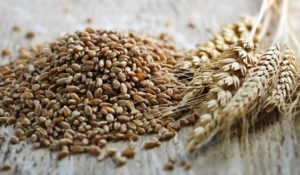Contents
Uses
The seed is made into a poultice and applied to tumours. The seed is also an effective laxative due to its fibrous seed coat.
Seed – cooked. A common cereal, it is used especially in N. Europe to make bread. The seed contains about 13% protein. The grain also contains some gluten, though not as much as wheat, so it makes a heavier bread than wheat. It can also be used to make cakes etc. The seed can be sprouted and added to salads. A nutritional analysis is available. Malt, a sweet substance produced by germinating the seed, is extracted from the roasted germinated seed and used as a sweetening agent and in making beer etc. The roasted (ungerminated) seed is used as a coffee substitute.
Other uses of the herb:
The straw is used as a fuel or as a biomass in industry. It is quite strong and can also be used in thatching, for paper making, weaving mats and hats etc. Other uses for the straw include as a packing material for nursery stock, bricks and tiles, for bedding, archery targets, and mushroom compost. The plant is a good green manure crop. It is fast growing with an extensive and deep root system. It is especially useful if sown in late autumn. Its growth over the winter will prevent soil erosion and the leaching of nutrients from the soil, it can then be incorporated into the soil in the spring. The extensive root system also makes this a good plant to use for soil stabilization, especially on sandy soils.
Benefits
Weight Loss Efforts: Rye is often considered a superior grain to wheat or barley in terms of weight loss efforts. The type of fiber in rye is somewhat unique, in that it is extremely binding with water molecules, meaning that it makes you feel full very quickly. The problem with being on a diet is that you are often hungry, so you inevitably give in. However, by removing the feeling of hunger and creating some sense of satiety, the type of fiber found in rye can keep you from snacking in between meals or overeating, which are two surefire ways to mess up your weight loss program!
Gallstone Issues: Recent research has revealed an important element in rye that can help to lessen the severity of gallstones. This is somewhat connected to fiber’s impact on the digestive process, as explained above, because fiber (particularly a mix of soluble and insoluble) can help to reduce the amount of bile acidsformed, which is the main cause of gallstone development.
Diabetes Aid: When it comes to blood sugar, diabetics must always be concerned and watch what they eat and when they eat it. Huge spikes and drops in blood sugar can be dangerous, and can even cause diabetic shock, asphyxiation, and a number of other very unpleasant outcomes. Wheat actually causes more of a spike in the insulin level in the body, as it is made of smaller molecules that are quickly and easily broken down into simple sugar, which causes the increase in insulin. Rye, however, which is composed of larger molecules, is not broken down as quickly and therefore has less of an effect on blood sugar.
Digestion: As mentioned briefly in the weight loss section, the impressive composition and density of dietary fiber in rye makes it perfect for someone who is suffering from constipation or some other blockage of the bowels. It can reduce excess gas, ease stomach pain and cramping, and prevent more serious conditions like ulcers, gallstones, or even colon cancer.
Metabolic Performance: Research performed at the University of Kuopio have shown that rye can result in the down-regulating of genes, particularly if they are damaging or harmful, such as those that can cause insulin or other chronic genes. As compared to other grains in the same family, rye appears to be the best at optimizing metabolic performance of our cells, even at the earliest stages of gene development.
Blood Pressure: As with most grains, rye is known for being heart-healthy. If you are suffering from high blood pressure or atherosclerosis, then adding rye to your diet on a regular basis is just as good, if not better for heart health as other cereal grains/grasses. These effects are the result of a number of variables, including fiber, vitamin, and mineral content.
Cancer Prevention: Although it seems that everything is either causing cancer or preventing cancer, the progression of research on antioxidant activity within grains like rye has been very encouraging. Phenolics are definitely present in rye, and although they are not the same antioxidants as are found in many other foods, they certainly have an effect in the human body, including in things like cancer and chronic diseases. In fact, rye has been linked to lower incidences ofbreast cancer, colon cancer, and prostate cancer.
Cautions
No hazards are known.
Interactions
None are recorded.
Other names
rye
References
Organic Facts, https://www.organicfacts.net/health-benefits/cereal/rye.html
NaturalMedicinalHerbs, http://www.naturalmedicinalherbs.net/herbs/s/secale-cereale=rye.php

